Abstract
Death and disability associated with breast and cervical cancer and hypertension can be reduced by early detection and treatment. The authors examined the rates for having obtained a Papanicolaou (Pap) test or pelvic examination, a breast physical examination, and a blood pressure test within the last 12 months among women of reproductive age in the United States in 1988, as reported by the 8,450 women interviewed for the 1988 National Survey of Family Growth. Overall, the annual rates of screening for women ages 15-44 years for those tests were 67 percent for a Pap test or pelvic examination, 67 percent for a breast examination, and 82 percent for a blood pressure test. Standard recommendations for the frequency of screening and survey data were examined to see whether actual screening practice was consistent with those recommendations. More than 90 percent of women who had a family planning service visit within 12 months received each of the tests, regardless of who provided the service or who paid for the visit. Women who were not sexually active, women with little education or low income, American Indian women, Hispanic women, and women of Asian or Pacific Islander descent had lower rates of screening than others, regardless of their risk status. These findings strongly suggest that the likelihood of having obtained screening among women 15-44 years old is determined primarily by how often a woman uses health care, rather than by her risk of disease.
Full text
PDF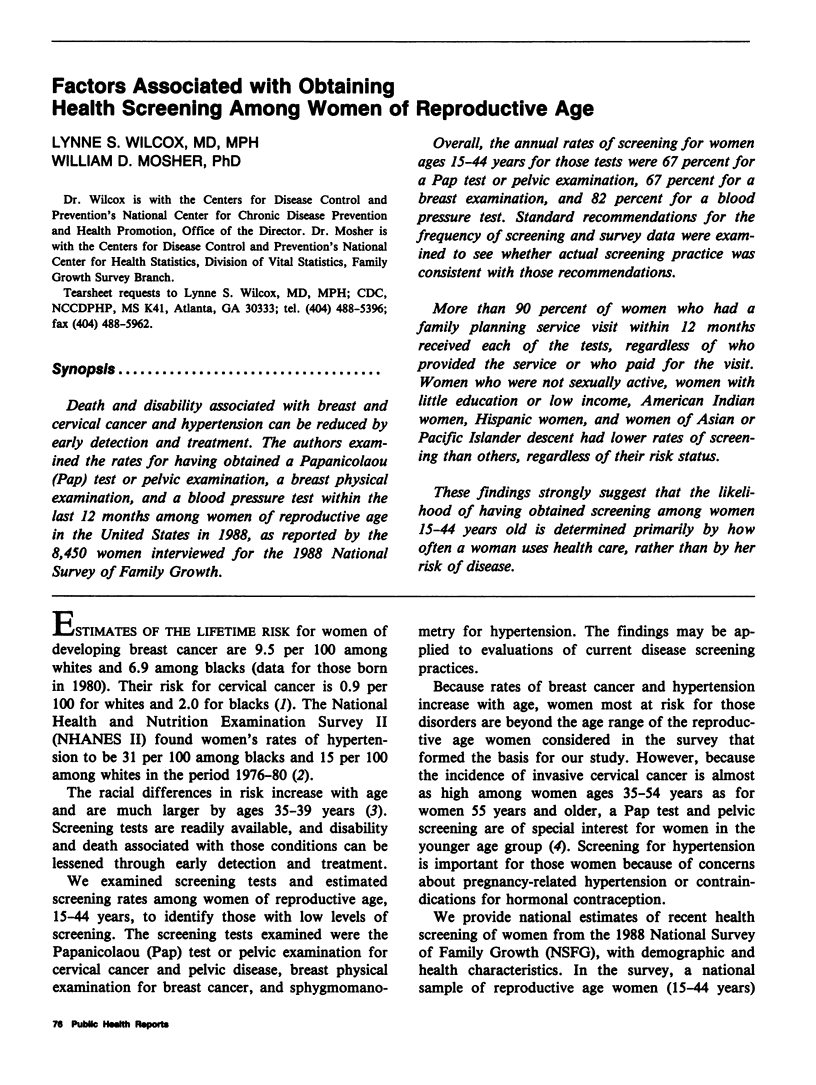
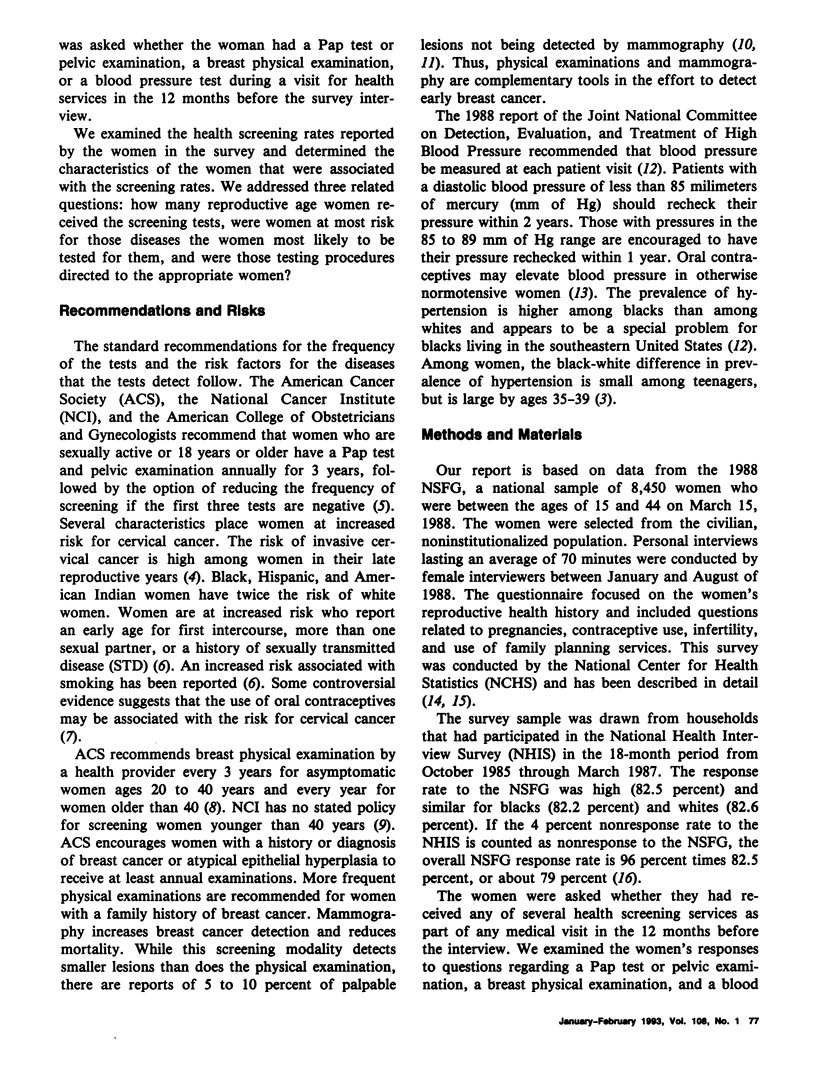
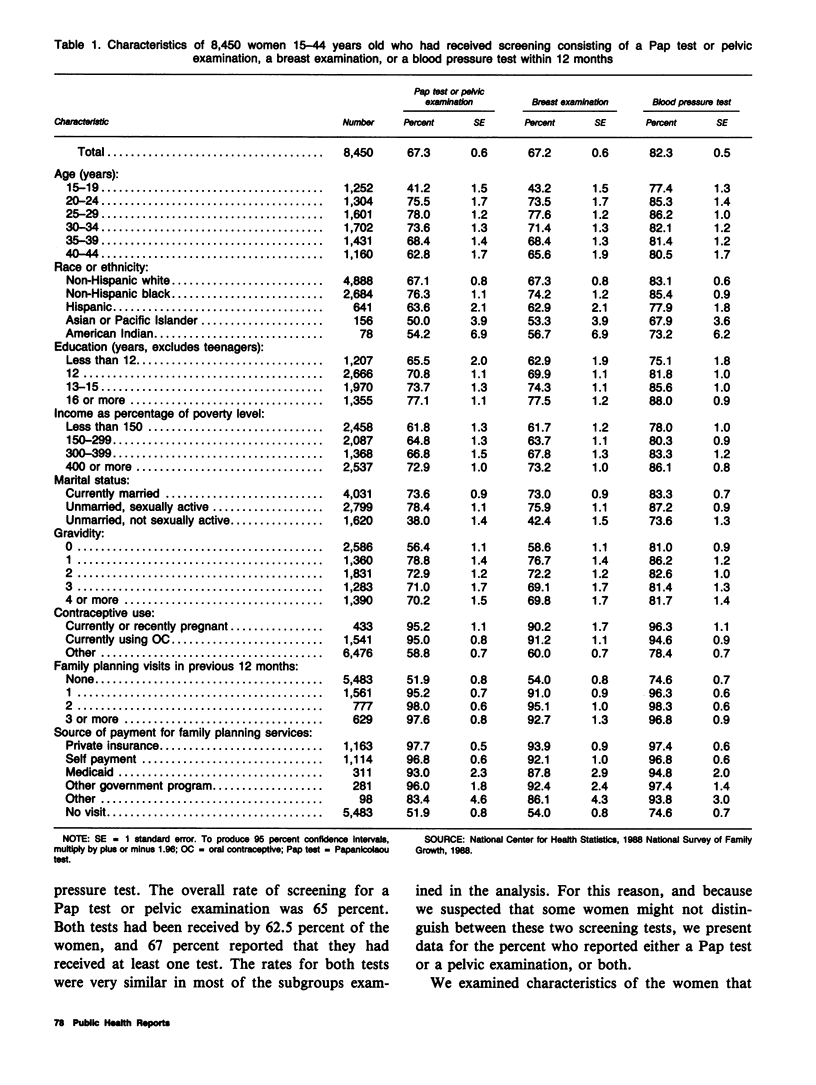
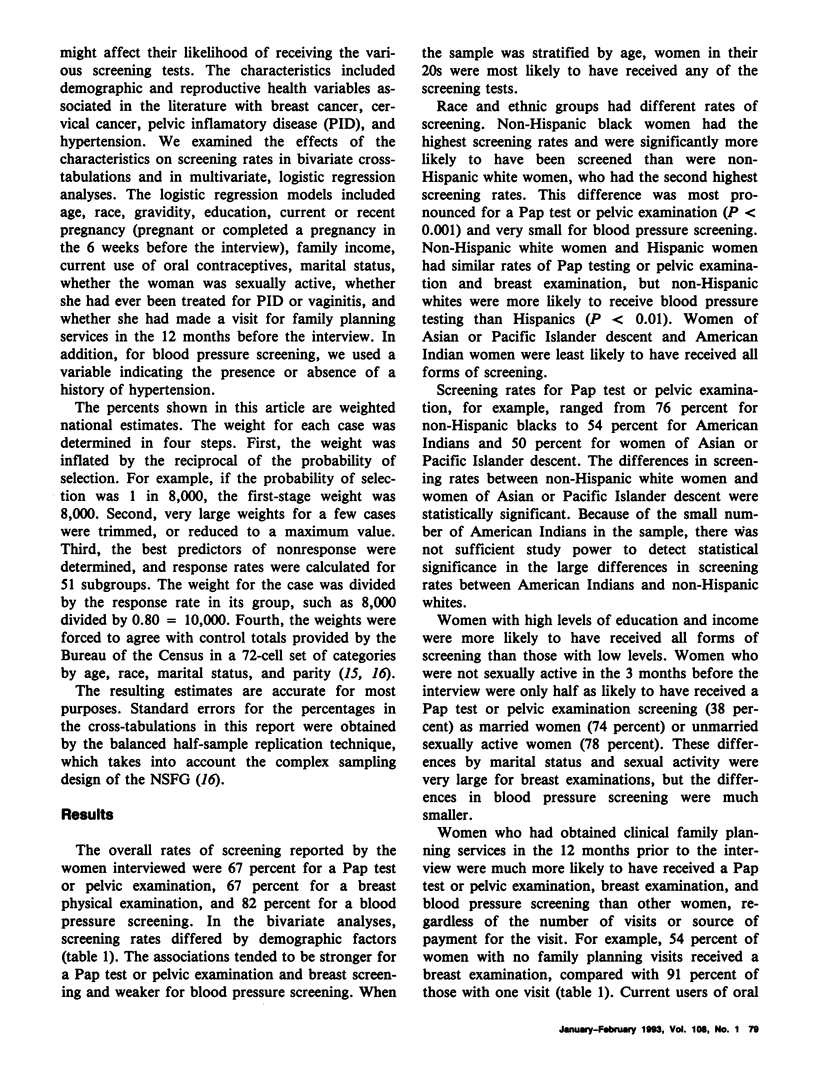
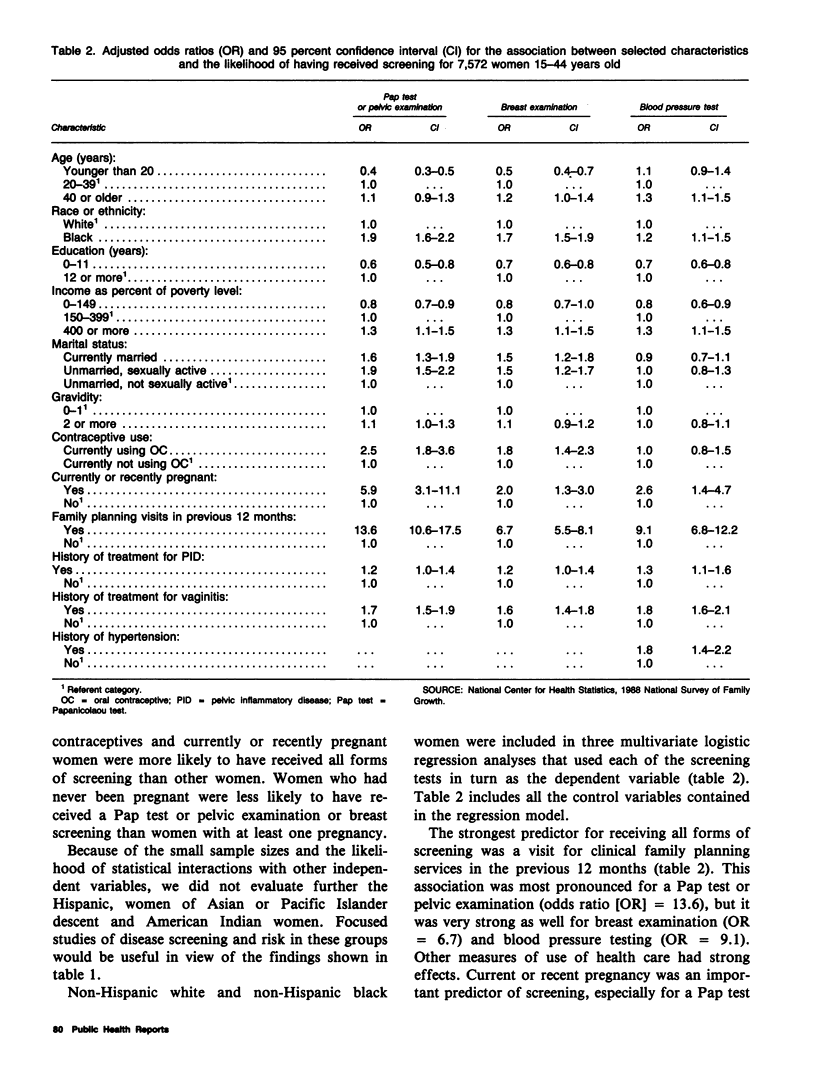
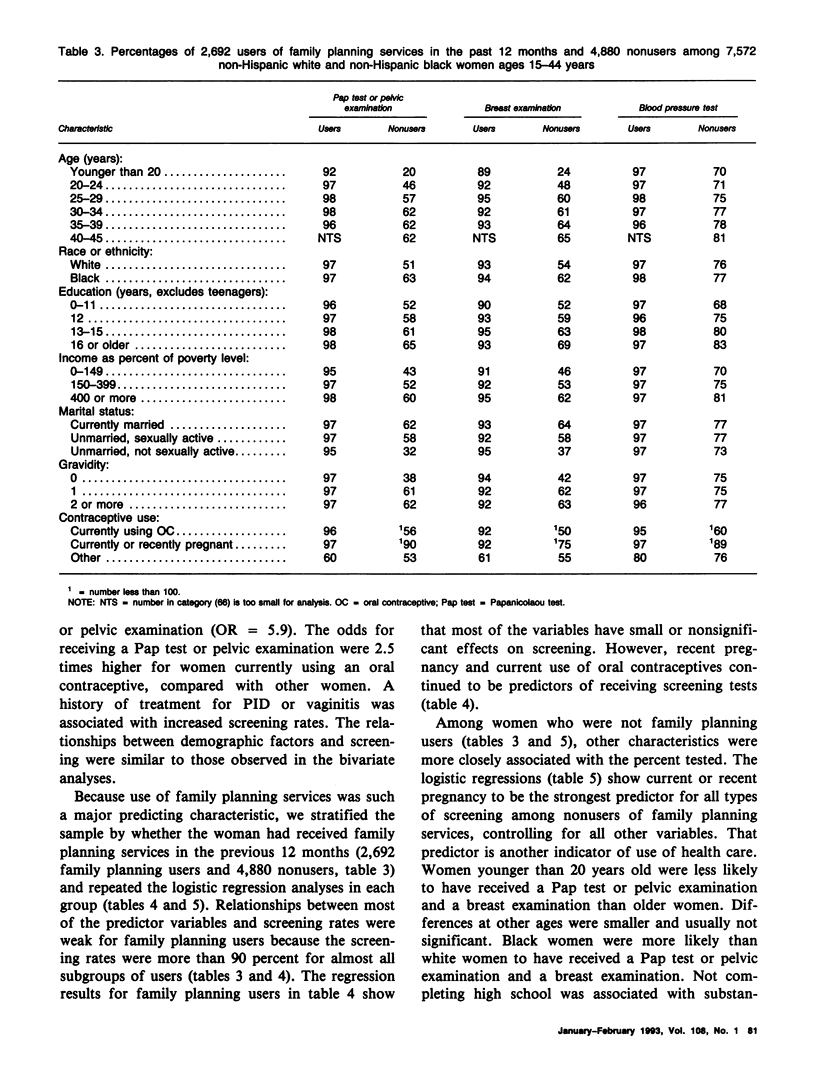
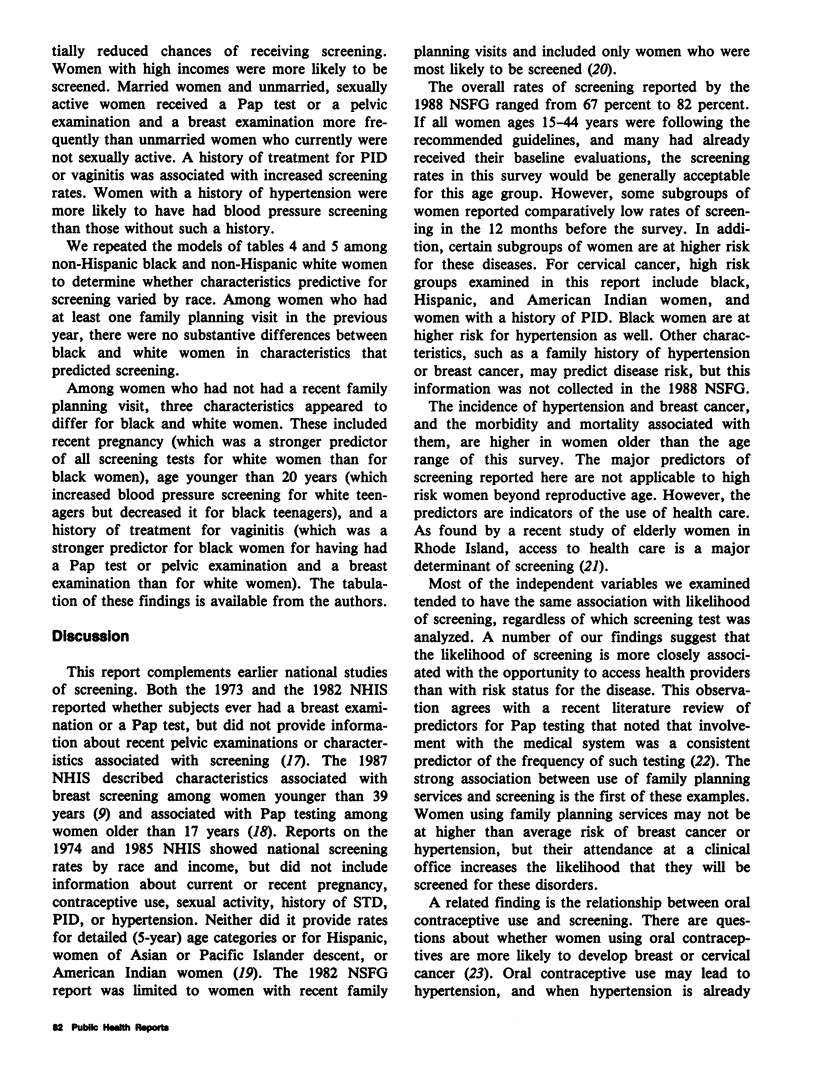
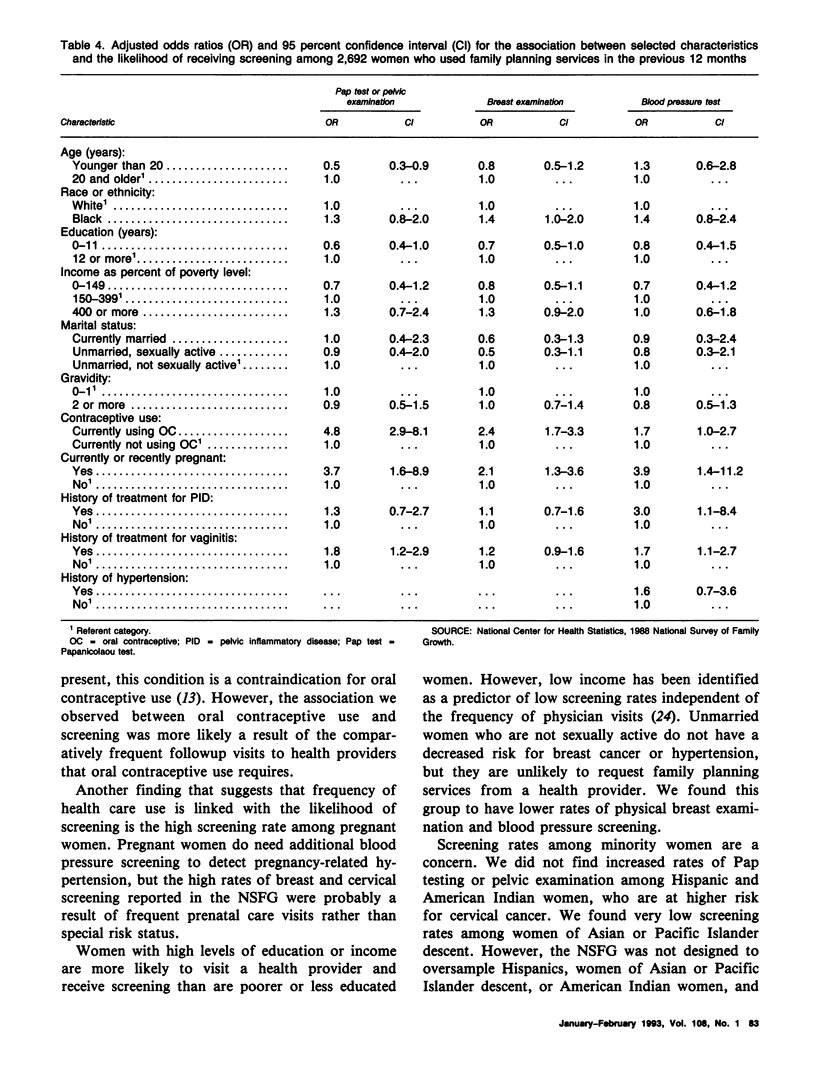
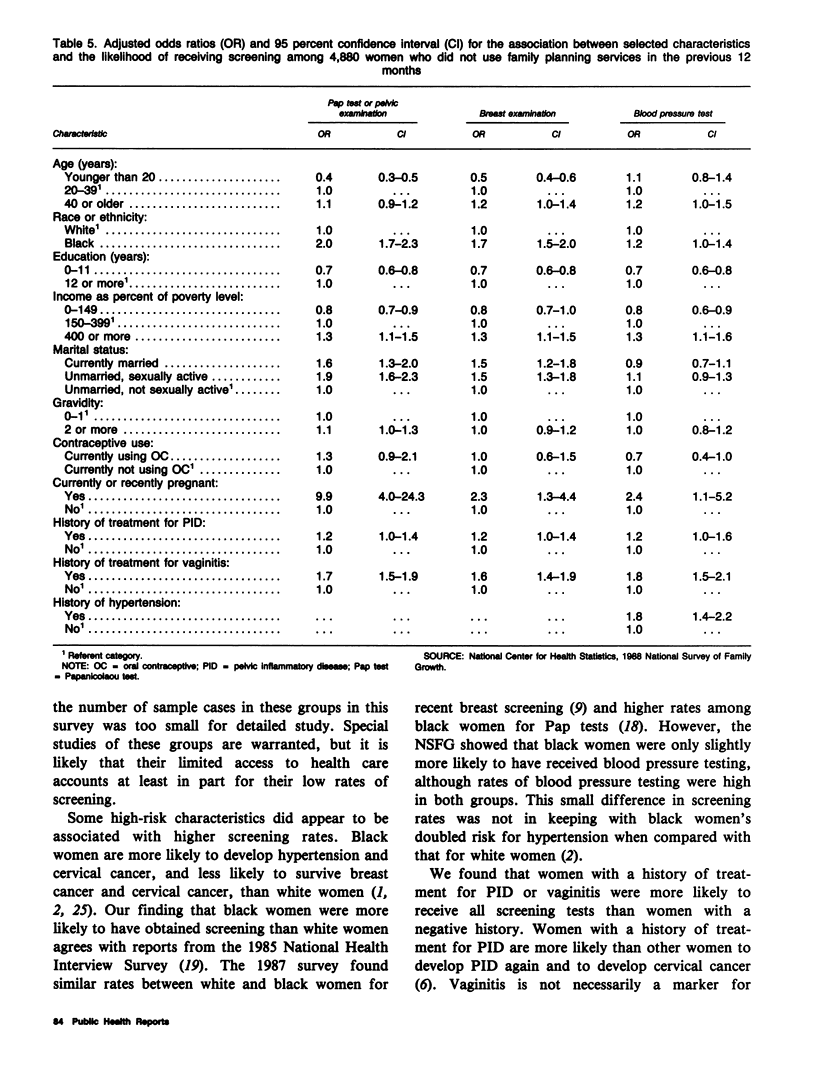
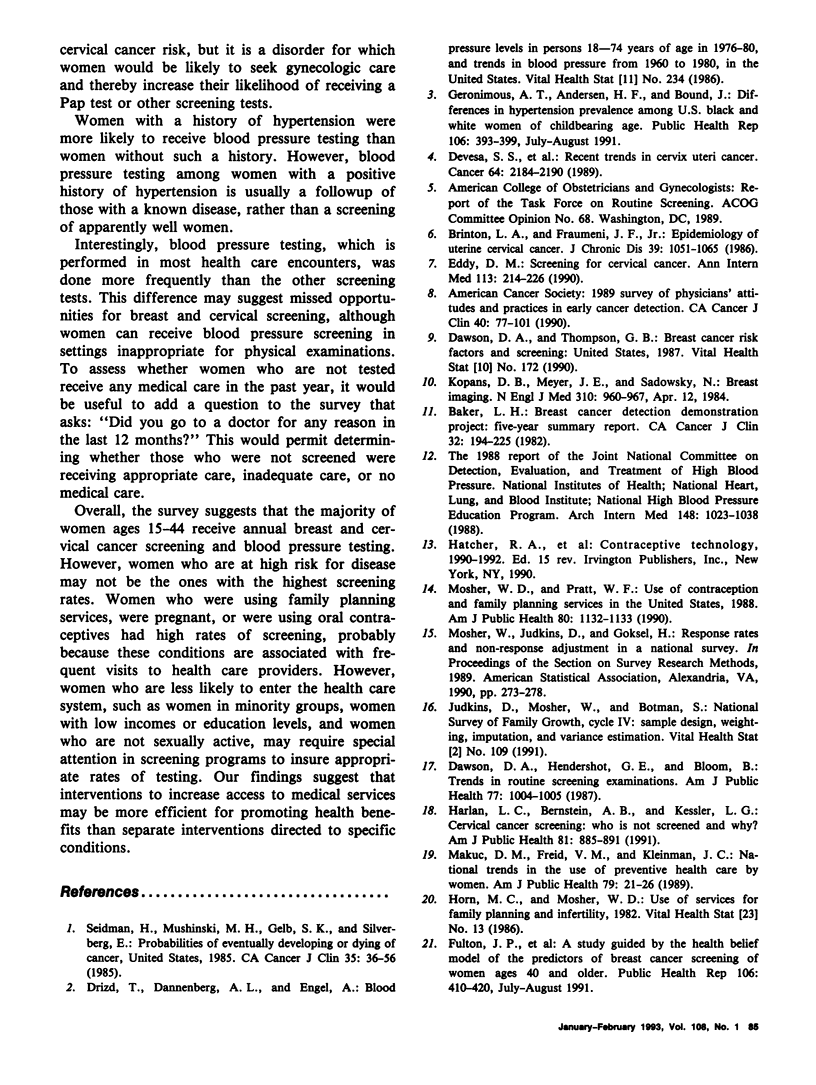
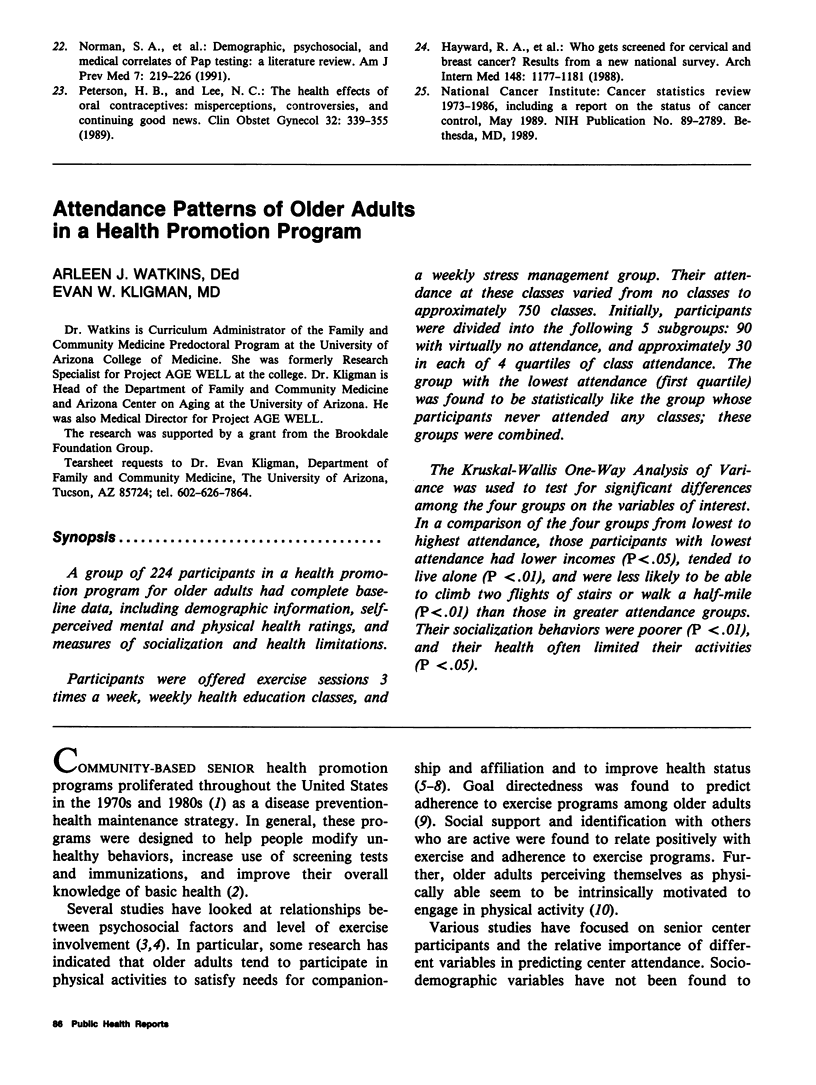
Selected References
These references are in PubMed. This may not be the complete list of references from this article.
- Baker L. H. Breast Cancer Detection Demonstration Project: five-year summary report. CA Cancer J Clin. 1982 Jul-Aug;32(4):194–225. doi: 10.3322/canjclin.32.4.194. [DOI] [PubMed] [Google Scholar]
- Brinton L. A., Fraumeni J. F., Jr Epidemiology of uterine cervical cancer. J Chronic Dis. 1986;39(12):1051–1065. doi: 10.1016/0021-9681(86)90139-6. [DOI] [PubMed] [Google Scholar]
- Dawson D. A., Hendershot G. E., Bloom B. Trends in routine screening examinations. Am J Public Health. 1987 Aug;77(8):1004–1005. doi: 10.2105/ajph.77.8.1004. [DOI] [PMC free article] [PubMed] [Google Scholar]
- Devesa S. S., Young J. L., Jr, Brinton L. A., Fraumeni J. F., Jr Recent trends in cervix uteri cancer. Cancer. 1989 Nov 15;64(10):2184–2190. doi: 10.1002/1097-0142(19891115)64:10<2184::aid-cncr2820641034>3.0.co;2-8. [DOI] [PubMed] [Google Scholar]
- Eddy D. M. Screening for cervical cancer. Ann Intern Med. 1990 Aug 1;113(3):214–226. doi: 10.7326/0003-4819-113-3-214. [DOI] [PubMed] [Google Scholar]
- Fulton J. P., Buechner J. S., Scott H. D., DeBuono B. A., Feldman J. P., Smith R. A., Kovenock D. A study guided by the Health Belief Model of the predictors of breast cancer screening of women ages 40 and older. Public Health Rep. 1991 Jul-Aug;106(4):410–420. [PMC free article] [PubMed] [Google Scholar]
- Geronimus A. T., Andersen H. F., Bound J. Differences in hypertension prevalence among U.S. black and white women of childbearing age. Public Health Rep. 1991 Jul-Aug;106(4):393–399. [PMC free article] [PubMed] [Google Scholar]
- Harlan L. C., Bernstein A. B., Kessler L. G. Cervical cancer screening: who is not screened and why? Am J Public Health. 1991 Jul;81(7):885–890. doi: 10.2105/ajph.81.7.885. [DOI] [PMC free article] [PubMed] [Google Scholar]
- Hayward R. A., Shapiro M. F., Freeman H. E., Corey C. R. Who gets screened for cervical and breast cancer? Results from a new national survey. Arch Intern Med. 1988 May;148(5):1177–1181. [PubMed] [Google Scholar]
- Kopans D. B., Meyer J. E., Sadowsky N. Breast imaging. N Engl J Med. 1984 Apr 12;310(15):960–967. doi: 10.1056/NEJM198404123101506. [DOI] [PubMed] [Google Scholar]
- Makuc D. M., Freid V. M., Kleinman J. C. National trends in the use of preventive health care by women. Am J Public Health. 1989 Jan;79(1):21–26. doi: 10.2105/ajph.79.1.21. [DOI] [PMC free article] [PubMed] [Google Scholar]
- Mosher W. D., Pratt W. F. Use of contraception and family planning services in the United States, 1988. Am J Public Health. 1990 Sep;80(9):1132–1133. doi: 10.2105/ajph.80.9.1132. [DOI] [PMC free article] [PubMed] [Google Scholar]
- Norman S. A., Talbott E. O., Kuller L. H., Krampe B. R., Stolley P. D. Demographic, psychosocial, and medical correlates of Pap testing: a literature review. Am J Prev Med. 1991 Jul-Aug;7(4):219–226. [PubMed] [Google Scholar]
- Peterson H. B., Lee N. C. The health effects of oral contraceptives: misperceptions, controversies, and continuing good news. Clin Obstet Gynecol. 1989 Jun;32(2):339–355. doi: 10.1097/00003081-198906000-00019. [DOI] [PubMed] [Google Scholar]
- Seidman H., Mushinski M. H., Gelb S. K., Silverberg E. Probabilities of eventually developing or dying of cancer--United States, 1985. CA Cancer J Clin. 1985 Jan-Feb;35(1):36–56. doi: 10.3322/canjclin.35.1.36. [DOI] [PubMed] [Google Scholar]


